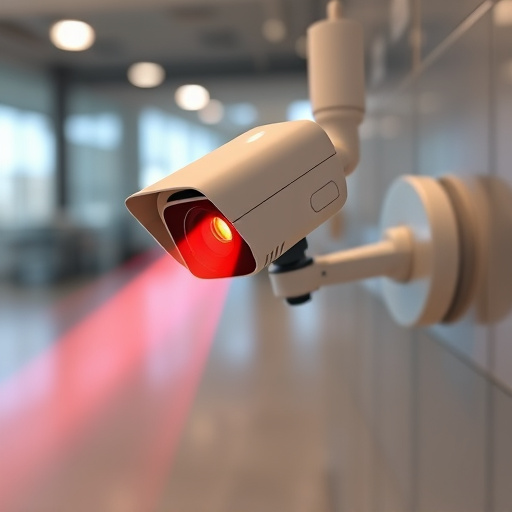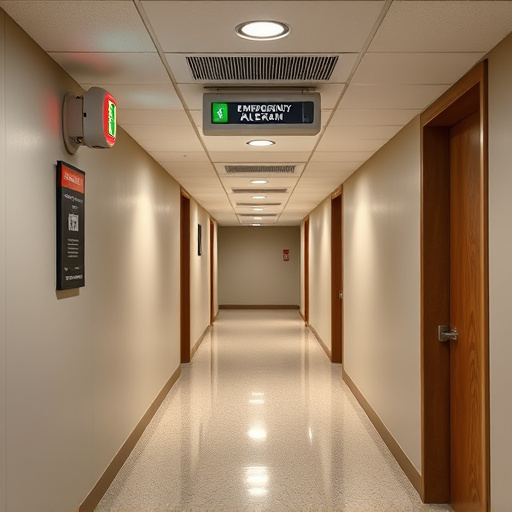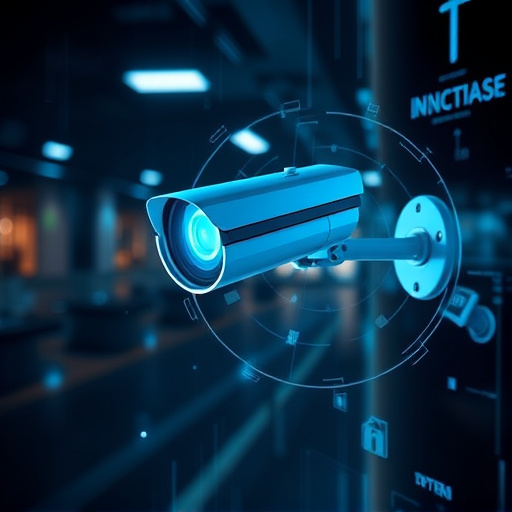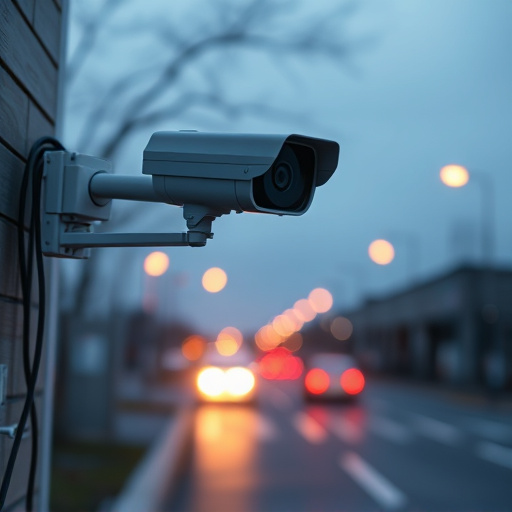Category: The Importance of Personal Safety Awareness
The Importance of Personal Safety Awareness: An In-Depth Analysis
Introduction
In today’s complex and ever-changing world, personal safety awareness has emerged as a critical aspect of daily life. This concept encompasses a range of practices, strategies, and mindsets aimed at ensuring individuals’ well-being and security in various environments. From bustling urban centers to remote rural areas, the need for heightened personal safety consciousness is more pronounced than ever. This article delves into the multifaceted world of personal safety awareness, exploring its significance, global impact, economic implications, technological innovations, policy frameworks, challenges, real-world applications, and future prospects. By examining these various facets, we aim to provide a comprehensive understanding of why personal safety awareness is not just a concern but a fundamental aspect of modern living.
Understanding The Importance of Personal Safety Awareness
Definition and Core Components
Personal safety awareness refers to the state of consciousness and proactivity individuals employ to protect themselves from potential risks, threats, or dangerous situations. It involves a combination of knowledge, skills, and behaviors designed to enhance one’s security and well-being. The core components include:
- Risk Assessment: Identifying potential hazards and evaluating their likelihood and impact.
- Awareness and Vigilance: Staying alert and observant in daily activities to detect suspicious or dangerous situations.
- Prevention Strategies: Implementing measures to avoid or mitigate risks before they escalate.
- Emergency Preparedness: Being ready to respond effectively during unforeseen events, such as accidents, natural disasters, or criminal incidents.
- Self-Defense and Safety Skills: Acquiring practical skills for self-protection and emergency situations.
- Information and Resource Management: Accessing and utilizing relevant information and resources to enhance safety.
Historical Context and Significance
The concept of personal safety awareness has evolved over centuries, shaped by societal changes, technological advancements, and global events. Historically, survival and self-defense were primarily focused on physical skills like hunting, combat, and basic first aid. However, with the advent of modern urban centers, globalization, and digital connectivity, the landscape of potential threats has diversified significantly. Personal safety awareness now encompasses a broader range of risks, from everyday street crimes to cyberattacks, natural disasters, and health emergencies.
Its significance lies in empowering individuals to take control of their security, reduce vulnerabilities, and make informed decisions in uncertain situations. By fostering personal safety awareness, communities can build resilience, enhance public safety, and contribute to overall well-being. This concept is particularly crucial for vulnerable populations, such as children, the elderly, and individuals with disabilities, who may require additional support and guidance.
Global Impact and Trends
International Influence
Personal safety awareness is a universal concern, yet its implementation and priorities vary across regions due to cultural differences, socioeconomic factors, and local challenges. The global impact is evident in various forms:
- Urban Safety Initiatives: Cities worldwide are adopting innovative solutions like smart city technologies, improved street lighting, and enhanced public transportation security to create safer urban environments.
- Rural Community Programs: In rural areas, focus groups and community-led initiatives promote personal safety through education, neighborhood watch programs, and emergency preparedness drills.
- International Collaboration: Organizations like the United Nations and regional bodies collaborate on global safety campaigns, sharing best practices and resources to address transboundary issues like human trafficking, cybercrime, and terrorism.
Key Trends Shaping the Trajectory
Several trends are shaping the future of personal safety awareness:
| Trend | Description | Impact |
|---|---|---|
| Digital Transformation | The rise of digital technology and connectivity has both enhanced and complicated personal safety. While it offers new tools for awareness and communication, it also presents risks like cyberbullying, online predators, and identity theft. | Requires updating traditional safety measures to include digital literacy and cybersecurity practices. |
| Globalization of Threats | Criminal activities, terrorist threats, and pandemics do not respect borders, necessitating international cooperation and standardized safety protocols. | Emphasizes the need for global awareness and shared strategies for addressing transnational risks. |
| Emphasis on Mental Health | Increasing recognition of mental health issues highlights the connection between psychological well-being and personal safety. | Integrates mental health support into safety programs to address underlying vulnerabilities. |
| Technological Advancements (discussed in detail later) | Innovations like body-worn cameras, advanced surveillance systems, and AI-driven analytics revolutionize personal safety tools and tactics. | Offers unprecedented levels of monitoring and threat detection but raises ethical considerations regarding privacy and data security. |
Regional Variations and Affects
The implementation and impact of personal safety awareness vary across regions:
- North America: Known for its advanced emergency response systems, sophisticated surveillance technologies, and robust law enforcement infrastructure. The emphasis is on proactive community policing and citizen engagement.
- Europe: With a strong focus on human rights and data privacy, European countries balance personal safety initiatives with stringent legal protections. This region leads in developing comprehensive crisis management protocols for various scenarios.
- Asia Pacific: Rapid urbanization and economic growth present unique challenges, leading to innovative solutions like smart city infrastructure and mass transportation safety systems. Community-based safety programs are also prevalent.
- Africa and Middle East: These regions often face security challenges related to political instability, terrorism, and natural disasters. Personal safety awareness initiatives focus on community resilience building and disaster preparedness.
Economic Considerations
Market Dynamics and Investment Patterns
Personal safety awareness has become a significant economic sector, driving market growth in various ways:
- Security Services: The demand for security guards, private investigators, and surveillance services is rising, creating job opportunities and fostering competition.
- Technology Solutions: Innovations in personal safety technology spur investment in research and development, leading to new product launches and market expansion.
- Training and Education: Courses and workshops on personal safety attract participants, generating revenue for educational institutions and training providers.
Role in Economic Systems
This sector’s contribution to economic systems is multifaceted:
- Reduced Crime and Liability: Effective personal safety measures can lower crime rates, reducing the financial burden on law enforcement and the justice system. Businesses also benefit from decreased property damage and liability claims.
- Increased Productivity: Safer communities lead to higher levels of business activity, as employees feel more secure and motivated. This contributes to economic growth and job creation.
- Tourism Boost: Safe and welcoming environments attract tourists, boosting local economies through increased visitor spending.
Technological Advancements
Impact on Personal Safety Awareness
Technology plays a pivotal role in enhancing personal safety awareness through various tools and platforms:
- Global Positioning System (GPS) Devices: These devices enable real-time tracking of individuals, aiding in emergency situations and providing peace of mind for parents monitoring their children.
- Smartphone Applications: Numerous apps offer personal safety features like panic alerts, location sharing, and automated incident reporting, empowering users to take control of their security.
- Body-Worn Cameras: Worn by law enforcement officers, these cameras provide evidence during interactions, improving accountability and transparency. In consumer versions, they offer a sense of protection and deter potential crimes.
- Surveillance Systems: Advanced surveillance technologies, including CCTV cameras, facial recognition software, and drone monitoring, enhance situational awareness in public spaces and critical infrastructure.
- AI and Data Analytics: Artificial intelligence analyzes vast datasets to predict and prevent crimes, optimize resource allocation, and improve overall safety management.
Future Potential and Ethical Considerations
The future holds immense potential for technological advancements in personal safety:
- Internet of Things (IoT) Devices: IoT-enabled home and personal security systems will offer more comprehensive protection, integrating with smart city infrastructure for a holistic approach to safety.
- Biometric Identification: Advanced biometric technologies like facial, iris, and fingerprint scanning will enhance identity verification, making it easier to prevent identity theft and unauthorized access.
- Virtual Reality (VR) Training: VR simulations can provide realistic training environments for emergency responders, security personnel, and individuals seeking personal safety skills.
However, these advancements also raise ethical concerns:
- Privacy and Data Security: As more data is collected and shared, ensuring the protection of personal information becomes critical. Balancing security with privacy rights will be a key challenge.
- Surveillance Ethics: Widespread surveillance can infringe on civil liberties, prompting discussions about proportionality, transparency, and accountability in its use.
- Accessibility and Digital Divide: Ensuring equitable access to technology for all segments of society is essential to avoid exacerbating existing social inequalities.
Policy and Regulation
Governing Frameworks
Personal safety awareness is subject to various policies and regulations that shape its implementation and practice:
- Data Protection Laws: These laws, such as the General Data Protection Regulation (GDPR) in Europe, govern how personal data is collected, stored, and shared, ensuring individuals’ privacy rights.
- Surveillance Regulations: Many countries have specific rules regarding surveillance practices, including guidelines on when and how law enforcement agencies can use surveillance technology.
- Safety Standards and Protocols: Organizations like the International Organization for Standardization (ISO) develop standards for safety management systems, providing a framework for businesses to implement effective personal safety programs.
- Criminal Justice Reforms: Legal reforms focused on restorative justice, victim empowerment, and diversion programs aim to reduce recidivism and promote community healing.
Influence on Development and Implementation
These policies significantly influence the following:
- Public Safety Priorities: They shape the focus of law enforcement agencies, guiding resource allocation for crime prevention, investigation, and response strategies.
- Corporate Responsibility: Businesses are required to implement safety measures that meet or exceed legal standards, fostering a culture of proactive employee protection.
- Community Engagement: Some policies encourage community involvement in safety initiatives, empowering residents to take ownership of their well-being.
- International Cooperation: Treaties and agreements between nations facilitate the exchange of best practices and harmonize safety standards across borders.
Challenges and Criticisms
Overcoming Obstacles
Despite its importance, personal safety awareness faces several challenges:
- Inequitable Access to Resources: Socioeconomic disparities can limit access to personal safety tools and training, leaving marginalized communities at a disadvantage.
- Stigma and Misconceptions: There is often a misconception that personal safety measures are only for vulnerable individuals, leading to stigma and underutilization by others.
- Lack of Standardized Protocols: Inconsistent or outdated guidelines can hinder effective coordination between different agencies and organizations involved in safety management.
- Technological Complexity: As technology advances, keeping up with the latest tools and ensuring their proper use can be challenging for both individuals and institutions.
Proposed Solutions and Strategies
Addressing these challenges requires a multi-faceted approach:
- Community Outreach Programs: Targeted initiatives that educate and empower diverse communities can reduce gaps in access to personal safety resources.
- Public Awareness Campaigns: Comprehensive campaigns that dispel myths and encourage proactive safety measures can foster wider participation.
- Standardization and Collaboration: Developing standardized protocols and promoting collaboration among relevant stakeholders will improve coordination and consistency in safety practices.
- Digital Literacy and Training: Providing training programs to help individuals navigate the digital landscape safely and effectively is crucial in today’s tech-driven world.
- Policy Reforms and Advocacy: Advocating for policies that prioritize personal safety, address disparities, and protect civil liberties is essential for creating a supportive regulatory environment.
Case Studies: Real-World Applications
Successful Implementation Stories
Several countries and communities have successfully implemented personal safety awareness initiatives, leading to measurable improvements:
1. Stockholm, Sweden – “Vision Zero” Road Safety Program:
This initiative aims to eliminate traffic fatalities and severe injuries by addressing human errors and improving road infrastructure. Through a combination of stricter laws, advanced transportation design, and public education, Stockholm has achieved remarkable success in reducing traffic-related deaths.
2. Tokyo, Japan – Neighborhood Watch Programs:
Tokyo’s neighborhood watch groups are highly organized and actively involved in local safety. They conduct regular patrols, share intelligence, and collaborate with police to prevent and resolve issues, making Tokyo one of the safest cities globally.
3. Australia – “Safe Schools” Program:
This national program focuses on creating safe and supportive learning environments in schools. It provides resources, training, and support for teachers and students, empowering them to handle various safety challenges, including bullying, cyberbullying, and emergency situations.
Future Prospects: Emerging Trends and Growth Areas
Potential Growth Areas
The future of personal safety awareness is poised for significant growth and evolution:
- Smart Cities and Communities: The integration of technology into urban infrastructure will enable more proactive and responsive public safety systems. Smart cities will leverage data analytics, IoT devices, and real-time communication to enhance security.
- Personalized Safety Solutions: Advancements in artificial intelligence and machine learning will allow for tailored safety recommendations based on individual needs, behaviors, and risk profiles.
- Mental Health Integration: Increasing recognition of the connection between mental health and personal safety will lead to more holistic approaches, addressing psychological vulnerabilities alongside physical risks.
- Global Collaboration Platforms: International platforms facilitating knowledge sharing and resource collaboration among safety professionals, governments, and organizations will improve global safety responses.
Emerging Trends to Watch
Several emerging trends are shaping the future:
- Augmented Reality (AR) Training: AR technologies offer immersive training experiences for various safety scenarios, enhancing learning outcomes and skill retention.
- Predictive Analytics in Safety: Utilizing advanced analytics to predict potential threats and vulnerabilities will enable more proactive risk management.
- Biometric Access Control: Beyond facial recognition, biometric technologies like vein scanning and behavioral biometrics will enhance physical security access control.
- Cybersecurity for Personal Safety Devices: As personal safety devices become more connected, ensuring their cybersecurity becomes critical to protect users from hacking and data breaches.
Conclusion: Securing a Safer Future
Personal safety awareness is an indispensable aspect of modern life, empowering individuals and communities to navigate the complexities of today’s world with enhanced resilience and preparedness. From technological innovations to global collaborations, this field continues to evolve, addressing emerging challenges and adapting to changing landscapes. By embracing best practices, fostering international cooperation, and prioritizing accessibility, we can build safer, more secure environments for all.
FAQ Section
Q: How can I make my home safer without spending a lot?
A: Simple yet effective measures include installing good lighting, securing doors and windows, using safety locks, creating a safe storage area for valuable items, and having working smoke and carbon monoxide detectors. Regularly updating security software on devices is also essential.
Q: What are some reliable personal safety apps I can use?
A: Numerous apps offer personal safety features, such as Life360 (location sharing), bSafe (panic alerts), SafeTrek (emergency assistance), and NoCode (personal safety dashboard). Choose apps that best suit your needs and ensure you understand their privacy policies.
Q: How can I stay safe while traveling alone?
A: Stay aware of your surroundings, keep valuable items secure, research local customs and laws, and inform someone trustworthy about your itinerary. Consider using travel safety apps and registering with your country’s embassy or consulate.
Q: What role does education play in personal safety awareness?
A: Education equips individuals with knowledge and skills to recognize and manage risks. It promotes behavior change, empowers people to make informed decisions, and fosters a culture of responsibility for personal safety.
Q: How can I contribute to global personal safety efforts?
A: You can contribute by staying informed about local and international safety initiatives, advocating for policies that support personal safety, participating in community programs, and sharing resources or funds with reputable organizations dedicated to this cause.
Empower Your Peace of Mind: Unlocking a Safer Future with Innovative Tech

Experience unparalleled peace of mind with the latest safety technology. Transform your home into a…….
Embrace Daily Safety: Your Path to Trust & Peaceful Living

Experience unparalleled peace of mind by embracing our simple yet powerful daily safety tips. Transf…….
Revolutionize Your Peace of Mind: Unlock a Secure Future with Cutting-Edge Safety Tech

Experience unparalleled peace of mind by embracing the latest safety technology. Transform your home…….
Empower Your Life: Master Personal Safety for Tranquility & Confidence

Discover the transformative power of Personal Safety Awareness, your secret weapon for securing a pe…….
Unleash Peace of Mind: Affordable Security Solutions for Smart Living

Experience unparalleled peace of mind with affordable security solutions that transform your home in…….
Embrace Peaceful Living: Master Personal Safety Awareness for Confidence Daily

Unleash the power of Personal Safety Awareness and transform your daily life with ease and confidenc…….
Stay Secure, Live Confidently: Modern Alerts for Peace of Mind
Empower Your Days with Peace: Daily Safety Tips for a Calm Life

Discover the power of daily safety tips in transforming your life into a serene sanctuary. By seamle…….
Empower Your Peace: Unlocking Personal Safety Confidence

Personal Safety Awareness is your secret weapon for cultivating a peaceful, secure life. By seamless…….

